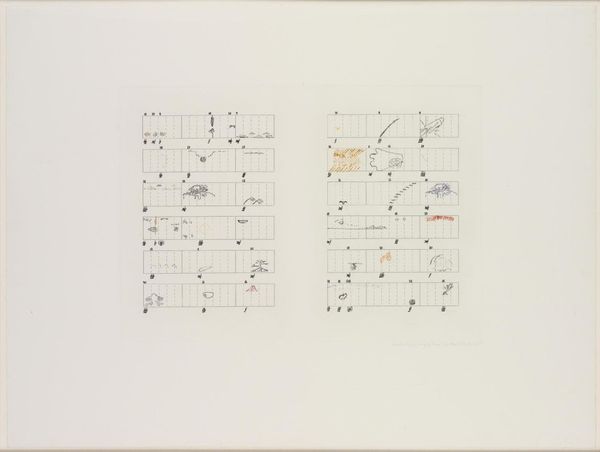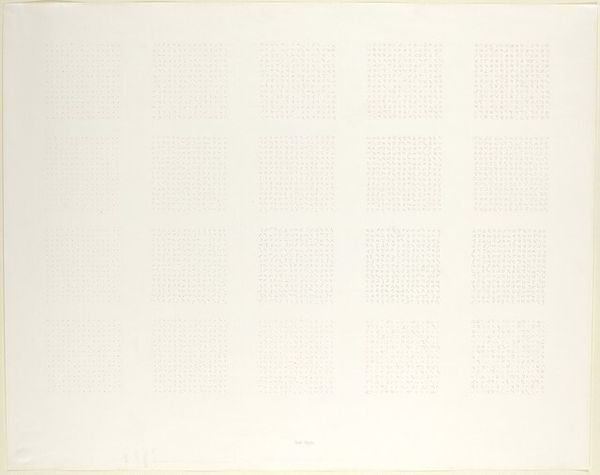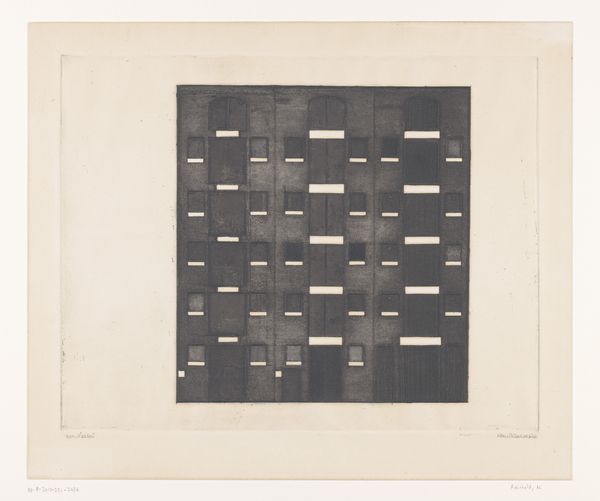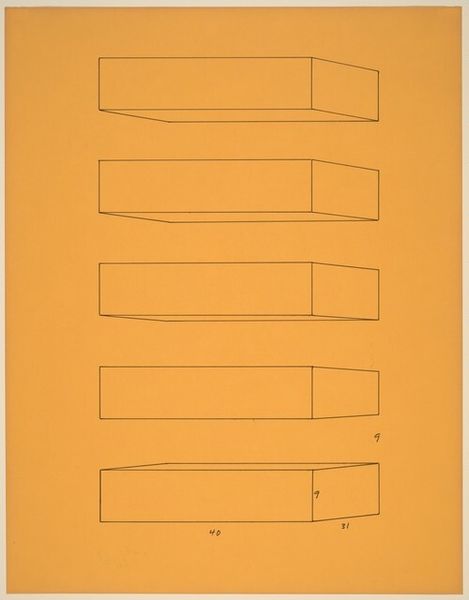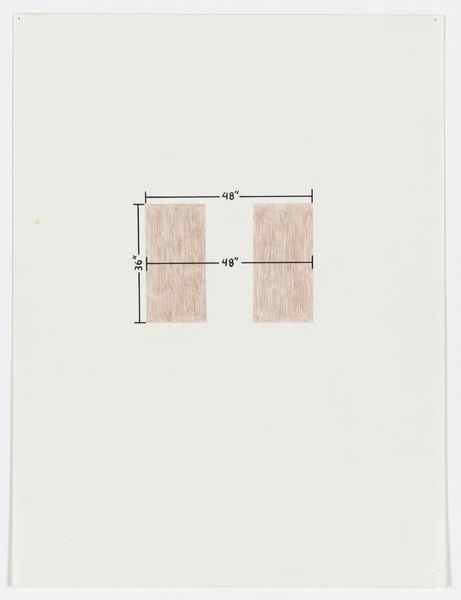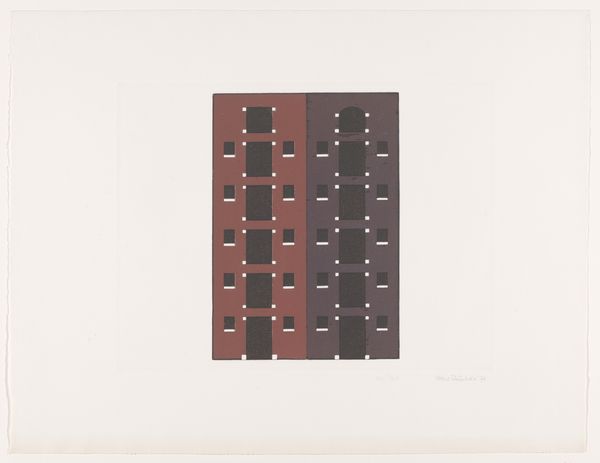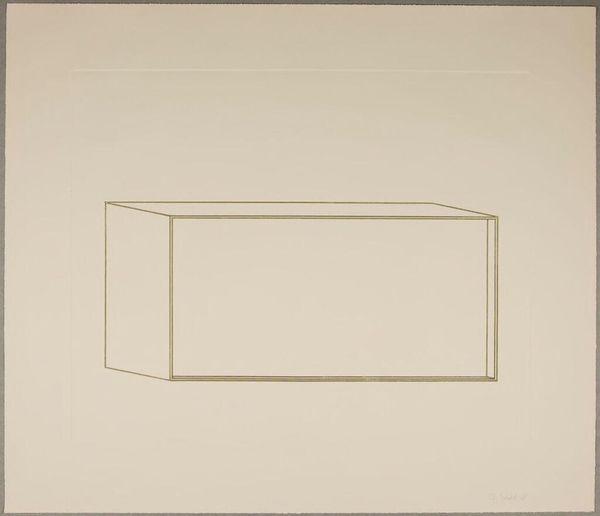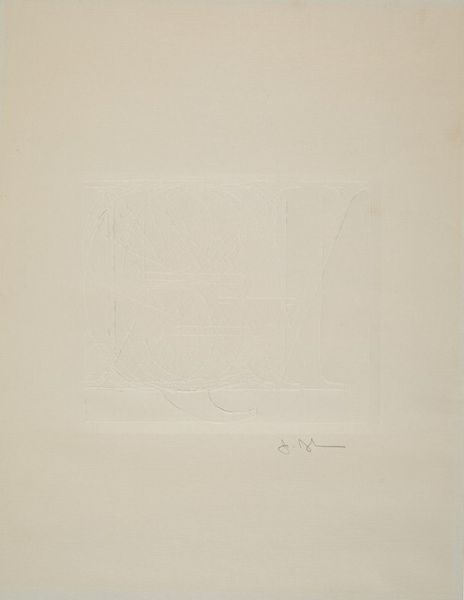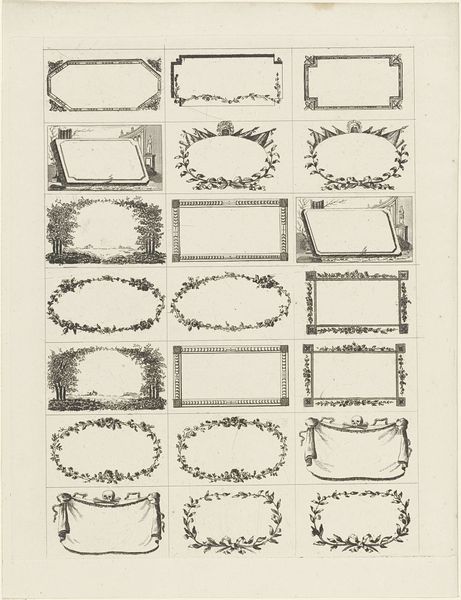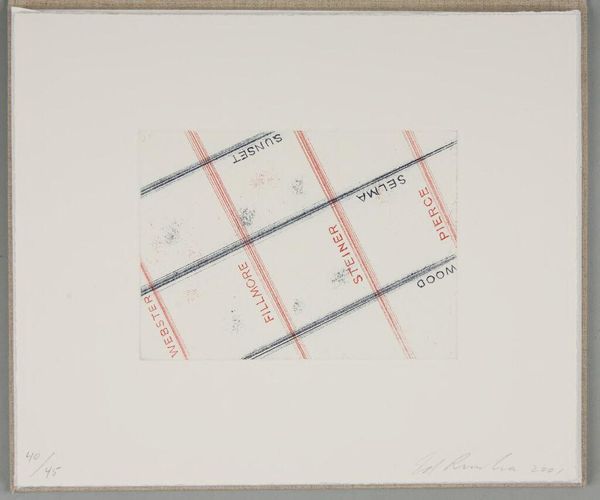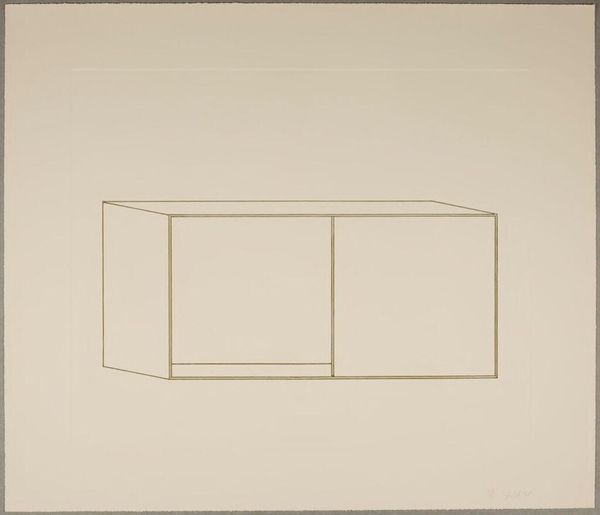
drawing, paper, site-specific, architecture
#
drawing
#
conceptual-art
#
paper
#
geometric
#
site-specific
#
line
#
architecture
Dimensions: sheet: 77.47 x 91.44 cm (30 1/2 x 36 in.)
Copyright: National Gallery of Art: CC0 1.0
Curator: "Veiled Landscape," dating from 1979, is a drawing by Mary Miss rendered on paper. Given its delicate appearance, it's interesting to recall that much of Miss's practice involved large-scale, site-specific earthworks. Editor: There’s an ethereal quality, a veiled fragility suggested by the delicate lines. It evokes a dreamlike space, as though one's looking through a screen or a memory. Curator: Absolutely. Miss was engaging with post-minimalism at the time, and that certainly speaks to this emphasis on linear form, simple geometry. Think Sol LeWitt, but with a far more tactile, handmade sensibility. It has some similarities to her later installations which often involve layering screens and grids, shaping perceptions of space. Editor: The grids and the layered perspective suggest a type of encoding – a structure that might hold deeper meaning. The cube form is prevalent throughout the history of architectural imagery, from city plans to personal spaces. Are these meant to be symbols of control, of limitation, or potential? The visual language almost encourages one to search for hidden symbols. Curator: That’s insightful, and that reading absolutely corresponds to how these structures function, or at least propose to function within the social landscape. Think of Foucault’s concept of the panopticon, how space, especially constructed space, creates its own modes of discipline. Though, to be sure, Miss often resisted any such simplistic readings of her work. She saw her sculptures and drawings as engaging and questioning such structures, not merely reenacting them. Editor: I can sense that resistance, in a way. The sketch feels deliberately unfinished, refusing to coalesce into a fully realized object, remaining elusive like an architectural ghost. Curator: Right, it functions as a drawing. An invitation. Even in this rather understated work, the politics of space are brought into our view. How we structure space and how those spaces shape us are a primary, if sometimes veiled, concern. Editor: Ultimately, that play of structure and veiling sparks curiosity and almost invites an archaeological dig to discover how spaces shape experience, and perhaps how, through that engagement, our preconceptions can be reshaped.
Comments
No comments
Be the first to comment and join the conversation on the ultimate creative platform.
